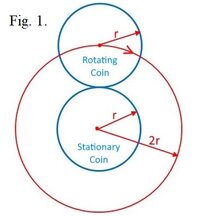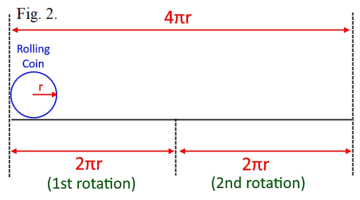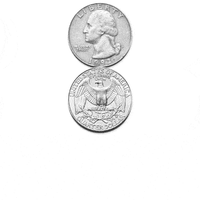Steven G
Elite Member
- Joined
- Dec 30, 2014
- Messages
- 14,591
Suppose you have a quarter (coin) and let's say its circumference is c.
If you rotate one quarter around another, where you start and finish at the same place on the stationary coin, then how many revolutions did the rotating quarter make?
If you rotate one quarter around another, where you start and finish at the same place on the stationary coin, then how many revolutions did the rotating quarter make?



